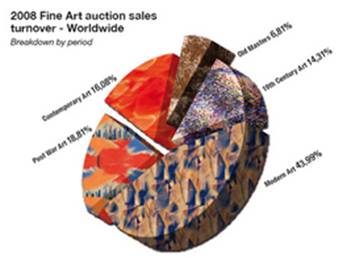The role of market research
What is market research?
We noted in an earlier section that the market-orientated firm bases it business operations on the need anticipate and then satisfy changes in customer demand. Market research concerns the present and future demand for products. It is the means used by firms to keep in touch with the needs and wants of those who want to buy and use their goods and services.

Market research
Market research is defined as 'the systematic and objective collection of forms of information that allows trends in market behaviour to be identified and predicted'. In other words it is the process by which firms find out market information, note its relevance and decide how to act upon it.

Marketing research
Marketing research is a broader term than market research as it includes research into the effectiveness of the firm's marketing strategy as well as market research.
Market research can be 'ad hoc' in that it is conducted when it is required, such as following a product launch, or 'continuous', when information is required on a regular and ongoing basis. Governments, for example, collect data on buying habits of the general public to allow them to identify 'the representative basket of good' used in the calculation of inflation; broadcasters will collect listener or viewer details which they can use to attract advertisers and schools will collect data on attendance for the education authorities.
High quality market research will not guarantee corporate success, but it will be an important part of the information gathering process that assists those having to make strategic decisions. The quality of the statistical analysis and evaluation relies on the quality of the data collected; 'garbage in, garbage out' is never more true than in market research.
The purpose of market research
Market research provides the firm data on:
- current market performance and predictions of future market trends
- customer purchasing behaviour e.g. where and how often they buy and in what quantities
- levels of current satisfaction with existing products
- customer response to planned products and services
- existing and future needs of its target market
- required changes to elements of its marketing mix, especially in light of competitors marketing activities
- information on the local, national and global economy
In particular the firm will seek information on the following:
The market and the customer
 The firm will want to establish:
The firm will want to establish:
- The size of the total market and/or whether it is growing or contracting.
- The geography of the market e.g. certain countries present problems that are not applicable elsewhere.
- What customers want, so it can build customer profiles.
- Where future markets might be and information about these.
- How customer perceive our current products in terms of price, quality and value.
- Whether customers are likely to buy new product offerings and the frequency of purchase.
- Price and income sensitivity (elasticity) within the marketplace.
The product
The firm needs to know:
- The possibility of extending and expanding the current product range.
- How customers view product pricing, quality, design and packaging.
- Where new markets are likely to emerge and whether the firm has existing products to serve these or will need to develop new ones.
- The strength and reputation of its brand.
The economy
The firm needs information on:
- Existing, and forecast, data on inflation, unemployment and economic growth.
- Potential government macroeconomic policies, such as tax and interest rate changes, to address economic problems.
- predictions about future economic.
- For a multinational organisation this data may be required at a local, national and international level. They will have particular regard to the countries where they trade.
The firm's competitors
The firm will want information on:
- Competitors' products and prices. Employees from rival retail outlets, such as supermarkets, frequently check out prices, and products of their competitors. This market intelligence forms the basis for the stocking or otherwise of certain product ranges and pricing levels for individual products or product groups.
- Why customers choose to shop in one store as opposed to another and, in particular, how they can be persuaded them to shop in its stores.
- Which firms have the highest market share and why?
- What unique selling points do the firm's rivals have and why?
- What weaknesses do competitors have and how might the firm take advantage of these to gain market share?
Costs and benefits of market research
The purpose of market research should reduce the number of bad product decisions and as a consequence, minimise the risk of failure. It should increase company profits and help pinpoints strategies for increasing the reputation of the firm. However, the costs and benefits of market research involve a complex balancing of factors and is an area in the business and management syllabus that requires particular analytical and evaluative skills.
- Market research is expensive and time consuming. However, the less a firm does, the greater the risk involved as the less it will know about its market.
- Marketing research must be cost effective - the cost should be less than the gain. However, how are costs and returns actually measured? To what extent can the firm create a direct link between a particular piece of research and the success or failure of its marketing operations?
- To what extent can the firm trust its findings and reduce the problems of bias? It is often cheaper to use data produced by other organisations, but how reliable is this?